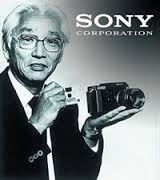

It was the world’s smallest, but actually it was a bit bigger than a standard men’s shirt pocket, and that gave us a problem for a while, even though we never said which pocket we had in mind when we said “pocketable”. “We managed to produce our first transistorized radio in 1955 and our first tiny “pocketable” transistor radio in 1957. With the help of a friend, we we were able to demonstrate our machine for the Japan Supreme Court,and we sold twenty machines almost instantly! Those people had no difficulty realizing how they could put our device to practical use they saw the value the tape recorder immediately to them it was no toy.“ Until that shortage could be corrected, the courts of Japan were trying to cope with a small, overworked corps of court stenographers. Morita writes “We noticed that during the early postwar period there was an acute shortage of stenographers because so many people had been pushed out of school and into war work. The tape recorder was the first product they developed, and initially customers were not buying. The products Sony pioneered include the tape recorder, the pocket radio, the walkman, the VCR, the video camera, the floppy disk, the CD and the discman. However, as a teenager he had got into electronics, and after the war was over, when he was in his 20s, he managed to convince his father to let his brother take over the sake business, while he co-founded Sony with Masaru Ibuka. He was the oldest son and was supposed to take over the business. Morita was born into a brewing family that had been brewing sake for 14 generations.

The autobiography is exciting and well-written, and in retrospect, I would have just read that half.

The second half consists of essays about business practices in Japan and the rest of the world. The first half of the book is an autobiography, and tells the story of the founding of Sony and some of the successes and failures. Akio Morita co-founded Sony in the aftermath of World War 2, when Japan was starting to re-build its economy. I recently finished “Made in Japan” by Akio Morita.


 0 kommentar(er)
0 kommentar(er)
